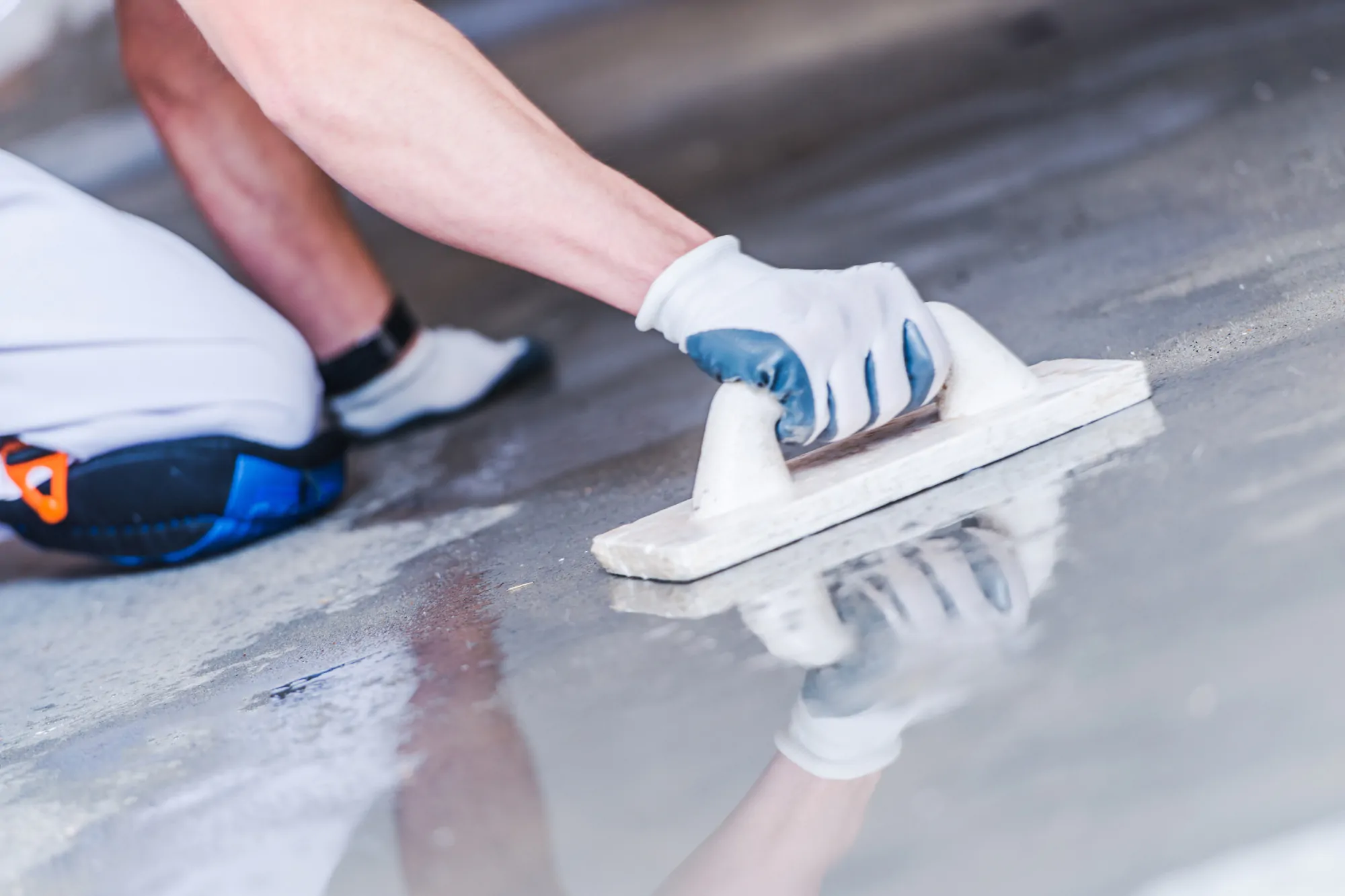Concrete is one of the most fundamental building materials in most construction industries.
You use it to put up walls and pillars. It’s a solid material that holds up to most abuse and lasts a long time.
While reliable, concrete flooring doesn’t always look or feel the best. Their temperature fluctuates and it can damage other finishing materials. When you’ve laid a concrete floor, you’ll often want to top it with something else like a rug or screed.
But what is screed and is it an essential addition to a concrete floor?
Screed Vs Concrete
Screed is a thin layer of material usually laid on top of a concrete subfloor. It can go in between concrete and other layers to help even it out or to provide a better surface for adhesives.
The concrete subfloor attaches to your floor joists to add support for the finished flooring. It can also protect your home from moisture damage and mould.
While you can technically go without screed in some cases, you might find that a concrete subfloor on its own doesn’t provide the best surface. It can often be unleveled with bumpy areas, and holes or cracks may form over time.
Both screed and concrete are technically made out of a cement mixture. The main difference is that concrete is much courser and stronger, while screed provides a smoother finish. Screed also costs more depending on the brand.
Once a layer of the screed has been placed, you can lay whatever finishing material you want on top of it such as carpet or tile. In some cases, the screed is laid on an additional layer of insulation.
You can also find an industrial screed that is suitable for newer or older concrete. Used for industrial applications, it is very tough and resistant to scratches or scuffs.
Types of Screed
The three main types of screed you’ll see are bonded, unbonded, and floating. Each is used depending on the application, and industrial screed is much thicker than domestic options.
1. Bonded
As the name implies, bonded screed is bonded to the substrate with an adhesive. In this case, it’s applied directly to the concrete slab due to the thinness of the screed.
While you could technically bond any screed, it isn’t needed at higher thicknesses. This type may be applied to concrete where there’s continuous construction or other heavy-loading applications. You can also find this used with cast-in water pipes in underfloor heating systems.
The thickness may vary from 25-40mm. Anything over that doesn’t need bonding agents.
2. Unbonded
An unbonded screed is not placed directly on top of a concrete layer, like the bonded variety. Instead, there’s a damp-proof membrane called builder’s plastic between it and the concrete.
The membrane helps to reduce shrinkage and moisture from collecting. Like a bonded screed, you can use it with cast-in pipes for underfloor heating. It runs thicker and doesn’t require an adhesive as a result.
Additionally, you won’t have to worry about movement or cracking in the slab since an unbonded screed isn’t physically attached to it.
3. Floating
Screed can also be applied as a floating layer of insulation material or in conjunction with another layer of insulation.
Floor insulation can eliminate drafts, create a moisture barrier, and keep pipes from freezing. When it comes to concrete, it helps to keep the temperature of the floor from varying too much.
Floating screed is mainly used in buildings with underfloor heating installed. It may also be used when acoustic or thermal insulation is used. As a result, a floating screed can be the thickest of the three different types.
Where to Buy Screed
If you’re wondering where to buy screed, first consider what kind you’ll need to purchase. Industrial screed needs to be strong enough to withstand heavy loads and rough conditions. It also needs to be skid-resistant. For a lightweight, domestic application, you can usually get away with a much thinner option. However, heated floors may require a thicker screed to act as insulation.
You can also find screed in the form of a pre-made liquid. Liquid floor screed is mixed at the plant and delivered in a truck mixer. It’s then pumped into place, allowing for a much thinner coating than most other options.
Check out our range of screed options to get an idea of what to buy.
How to Screed a Floor
Once you’ve acquired the correct type of screed, you’ll need to learn how to screed a floor.
First, you have to clean the concrete base and mix your screed together. If you’re using the unbonded variety, you’ll need to put down a sheet as well.
Divide the floor into sections, such as timber battens. Divide the room into strips about 3 or 4 meters wide.
Apply the screed starting from the farthest section, and level it with a straightedge. Go section by section until each is full, then remove the battens. Fill in the gaps left by the battens and bull float the screed right away.
Cure the screed and wait before you install flooring on top of it. In some cases, you may want to wait at least three weeks, but the screed should dry completely within a day.
Layering Your Base
If you haven’t been using Screed, you’ll be surprised how much it can improve your flooring job. Not only does it help level out any lumps or bumps, but it also provides a smooth surface to stick your finished floors on top of.
If you’re interested in screed and what it can do for your business or projects, contact us today. We also stock flooring, underlays, and more.


